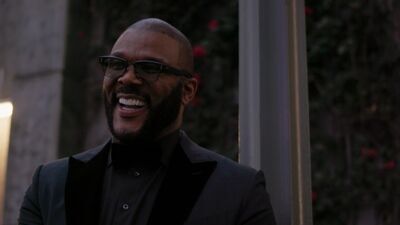The two most effective parts are the section about Perry’s abuse by his father, who beat him bloody on the regular, and the section analyzing the appeal of Perry’s staggeringly successful run as a self-made theater impresario who could sell out venues with thousands of seats by telling stories about working-class, church-attending, mostly culturally conservative Black characters like the people he grew up with. The plays, and later the films and TV shows, reflected the experiences of audiences that (as Perry’s friends Whoopi Goldberg and Oprah Winfrey tell the filmmakers) were badly represented when they were represented at all, and the gratitude at being represented has translated into a seemingly bottomless reservoir of goodwill that carries Perry through career lulls and setbacks. “I recognized that it was feeling a level and depth of understanding that regular media would not be able to comprehend,” Winfrey says of Perry’s early work, such as “I Can Do Bad All By Myself,” “Diary of a Mad Black Woman,” and “Woman, Thou Art Loosed.”
The analysis and defense of Madea, who was criticized as a stereotype and even picketed (mainly by racist homophobes), is enough reason to see the documentary if you’re interested in Perry’s work. The sharpest insight comes from poet/playwright/artist Carl Hancock Rux, who says that Perry’s play and film “Diary of a Mad Black Woman” is “not really the diary of a mad black woman or an angry black woman. It’s the diary of a puppet.”
Rux later delivers a line so incisive and unsparing that it temporarily halts the movie’s image-burnishing momentum. About midway through, a brief section deals with criticisms of Perry as a merely canny entertainer who exploits stereotypes for profit (one of his most famous detractors was Spike Lee). Then Rux comes in and pretty much says that Perry is shallow and superficial in how he portrays his own people: “I don’t see the evidence that he entered this creative marketplace armed and informed, to really give something noble and valuable to a Black-Brown community,” he says. “Don’t believe that.”
Viewer whiplash might occur at this point. It’s rare to see a film about a famous person produced by his own colleagues and/or loved ones that would allow a kill shot like this one to stay in a finished cut. You have to admit that only a person with a secure ego would be OK with even booking such a person as a talking head. But the movie is not interested in asking Rux what he meant or illustrating it with clips, so it has no value as anything other than a tantalizing momentary provocation.
Very soon after that, the movie lionizes Perry for his productivity (he says he’s written as many as 20 scripts in two weeks) and for self-financing the first ten episodes of his cable series “House of Payne,” which caused the network to order 90 more (enough for a syndication deal) and led to what is now known as the “10/90 split” in TV production deals. The pinnacle for Perry the mogul was the 2019 opening of his studio in Atlanta on the former Ft. McPherson Army facility, with soundstages named for Black artists who inspired him (including Winfrey and Goldberg), built on land where architects of the Confederacy once plotted to keep Perry’s ancestors in bondage.

